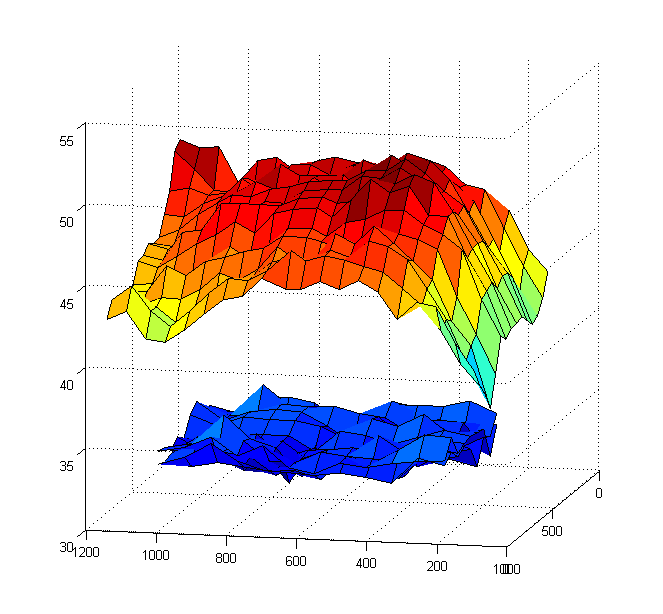Luminance Correction
In order to achieve an as homogeneous as possible luminance across a LCD Monitor (NEC MultiSync® 90GX²Pro), we measured the luminances at different positions at different grey values.
From this data, we calculated an alpha mask that is presented in front of the stimulus and reduces the luminance of every pixel to be as equal as possible to the one with the lowest measured luminance. An optimal correction was assumed to be at 75 cd/m².
Then we performed another two measurements, to check the goodness of this luminance correction. To achieve a time invariant state, we had to wait for 2,5 hours after switching the monitor on.
The diagram shows the measured luminance in cd/m² for every measured location on the screen (in pixels) for the uncorrected case (upper surface) and two times measured with active luminance correction (lower two surfaces):

The overall luminance standard deviation across the screen was reduced by the correction to values of 0.68 cd/m² and 0,85 cd/m² respectively.
Since the correction data can be read into nrec via a simple file containing the alpha value for every pixel, it is possible to apply different kinds of alpha masks such as gaussian profiles.
Thanks to Leopold Zizlsperger for performing the measurements.
